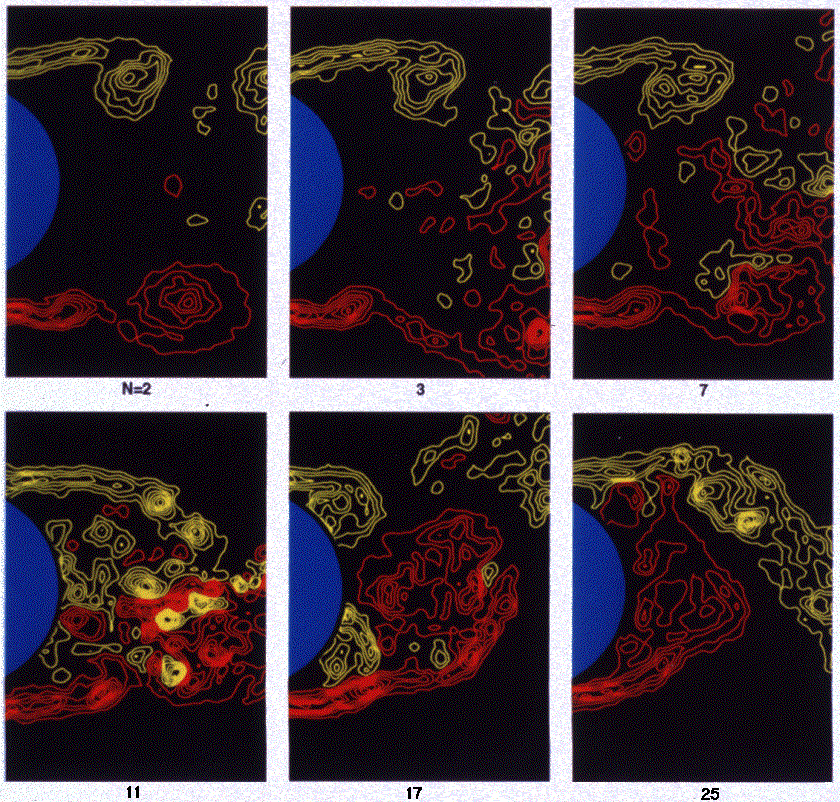You are here
Home ›Phase-locked formation of Kelvin-Helmholtz vortices in the near-wake of the cylinder.
Phase-locked formation of Kelvin-Helmholtz vortices in the near-wake of the cylinder. Perturbation of a cylinder at the inherent Kelvin-Helmholtz frequency of the separating shear layers and at a sufficiently large amplitude corresponding to 0.04D, where D is the cylinder diameter, generates patterns of small-scale vortices shown in the top row of images. Each pattern of the initially-formed vortices tends to be spatially repetitive, as indicated in the successive images at N = 1, 2 and 3 cycles of perturbation. If the corresponding instantaneous velocity fields are low-pass filtered, then the (white) streamlines indicate the sequence of formation of the Kármán vortices shown in the bottom row of images. It is therefore possible to witness the spatial and temporal development of Kármán vortices in presence of phase-locked Kelvin-Helmholtz vortices. The end consequence is formation of Kármán vortices very close to the base of the cylinder, much like that occurring in the natural state from a stationary cylinder at higher Reynolds number. Re = 5,000. [1,2] Related observations are described in [3,4,5,6].

